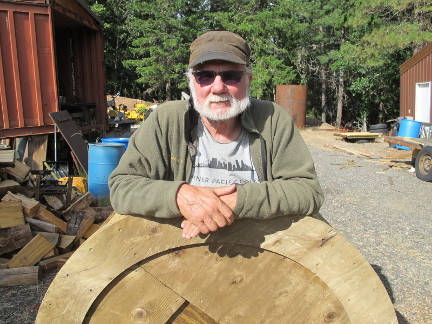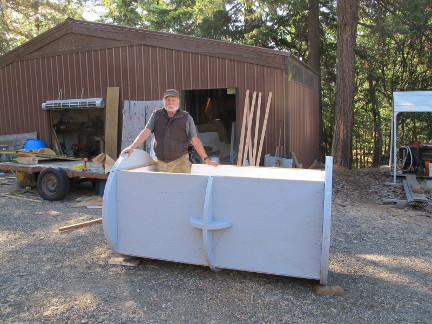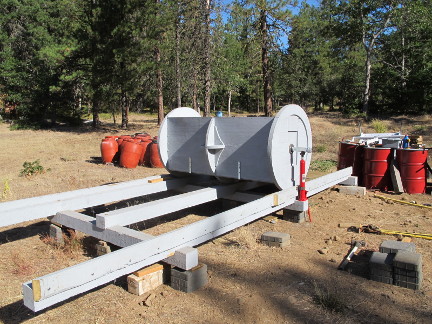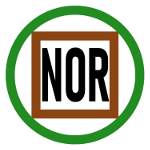Natural Organic Reduction is Here!
Want to be buried on your own land?
We can help!
Herland Forest is pleased to announce that it has been granted a license by Washington state to operate the country’s first natural organic reduction facility. It’s been an interesting journey, so let me take you back to the beginning.
We were surprised when we got a call from Portland’s KOIN6-TV. The Washington legislature had just passed ESB 5001 making natural organic reduction a legal option for the disposition of human remains, and KOIN6 wanted to talk with someone involved in green burial about what was involved. Since we’ve been doing natural organic reduction of large mammals for some thirty years, we said, “Sure, come on out and we’ll talk.”
Reporter Emily Burris came out and took a tour of the Herland Forest, and we had a most pleasant conversation that resulted in a feature on the evening news. I was completely impressed by Burris’ competence as a reporter and how quickly she was able to grasp some of the complex issues involved.
Given the amount of attention that natural organic reduction was getting, we recognized that there would be some people who wanted to avail themselves of this option. Given our long-standing involvement in developing village-scale sustainability systems, we decided to put together a low-cost process that transforms human remains into soil without harming the environment.

In Herland Forest, we go with traditional techniques and designs whenever possible. In this case, we used the concept of an old-fashioned rocking cradle to support and rotate the remains during the reduction process. We also designed our NOR facility to be totally off-grid so that no fossil-fuel energy would be used to operate the process.
Folks who’ve done compost in their gardens know that a key part of the process involves turning the compost at regular intervals. This is important because it allows the organisms doing the work to get the oxygen they need in order to keep the process going.

the NOR cradle
Without additional oxygen the process would become sour and promote the generation of methane, something we want to minimize since methane is a much more impactful greenhouse gas than carbon dioxide.
The NOR cradle is mounted on a rack that allows the cradle to be rolled back and forth by hand as the process proceeds. By monitoring the internal temperature, we know that when the temperature starts to drop, the cradle needs to be rotated.

When rotating the cradle no longer causes the temperature to rise, we know that the process is running low on oxygen. To counter that, the NOR cradle is designed as a hyperbaric chamber in which pure oxygen is injected into the compost to ensure that the process remains aerobic. The oxygen is produced on site using a clay matrix that separates air into nitrogen and oxygen, the same technology that enables people to have oxygen generators in their homes.
In order to break down the bones, our NOR process is designed to maintain a temperature of at least 160° F throughout the process. The natural decomposition process will initially heat up the remains, but in time rotating the cradle and adding supplemental oxygen won’t be enough to maintain the high-temperature. At that point, the cradle is designed to use solar energy from photo-voltaic panels to power an electric heating pad that’s built into the floor of the cradle.
Once the initial process is complete, the cradle’s lid will be removed and the compost taken out and screened. As with cremation and alkaline hydrolysis, any remaining bone fragments will be pulverized and any metal parts such as pacemakers and hip-replacements will be removed by hand and recycled.
The reduced remains are then transferred to open-top, food-grade, 55 gallon drums. That’s where the final step of the reduction process occurs as the bacteria, protozoa and fungi finish the work of transforming the remains into soil. It’s similar to the way that wine is transferred into oak barrels in order to age.
Certain times of the year are good for applying compost; some aren’t. So, Herland Forest will store the reduced remains on site for up to a year so that the family can take possession of the remains at the time of year when they can use compost most effectively. In the event that the family decides they don’t want to take possession of all four barrels of compost, then the remainder will be used to plant a tree in the Herland Forest.
So the upshot is that Herland Forest can now offer two different ways to return to nature and become a tree; natural burial in our forest, or reduction and then subsequent burial on your own land.

